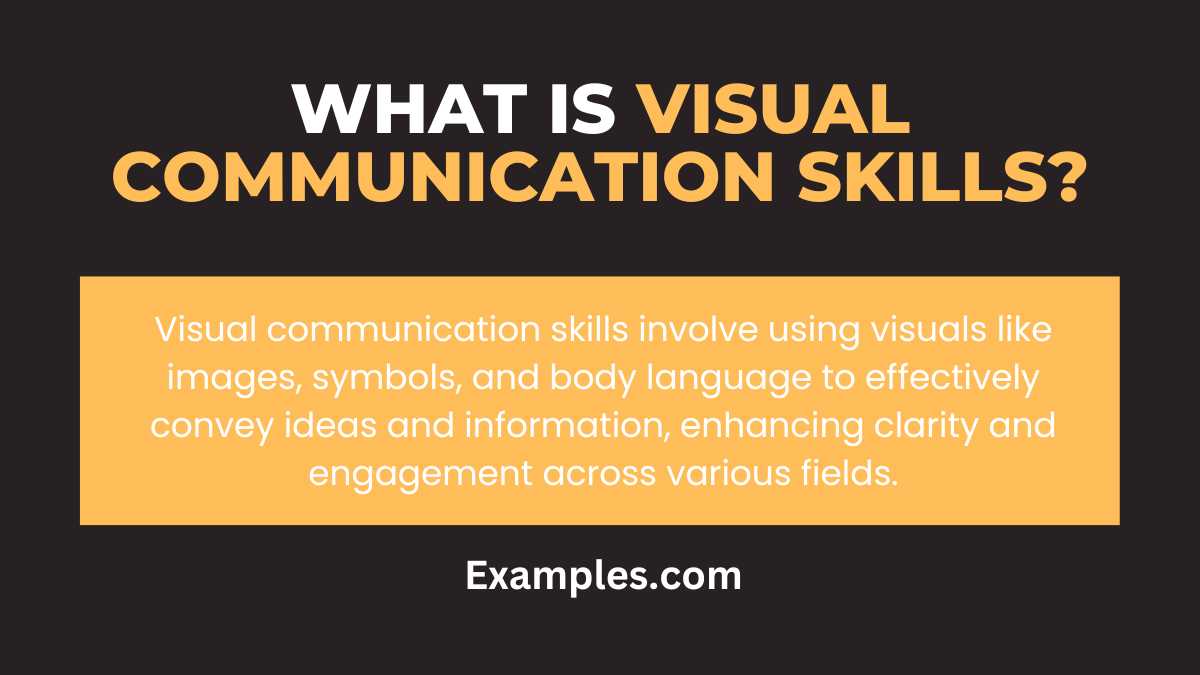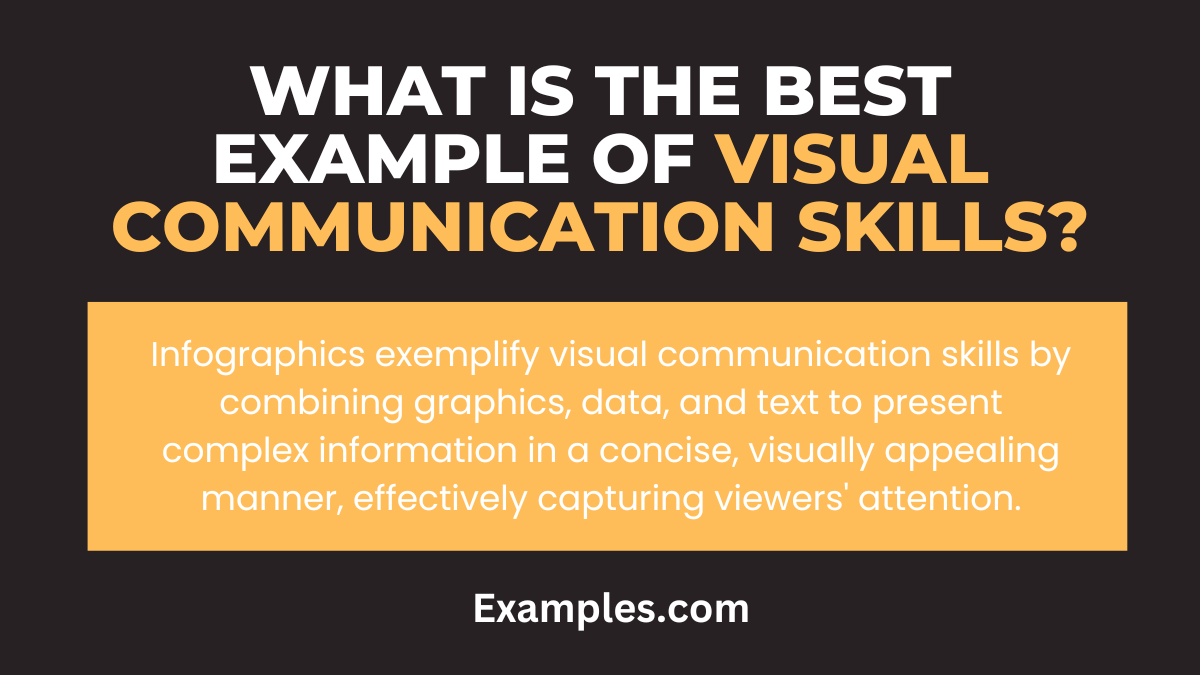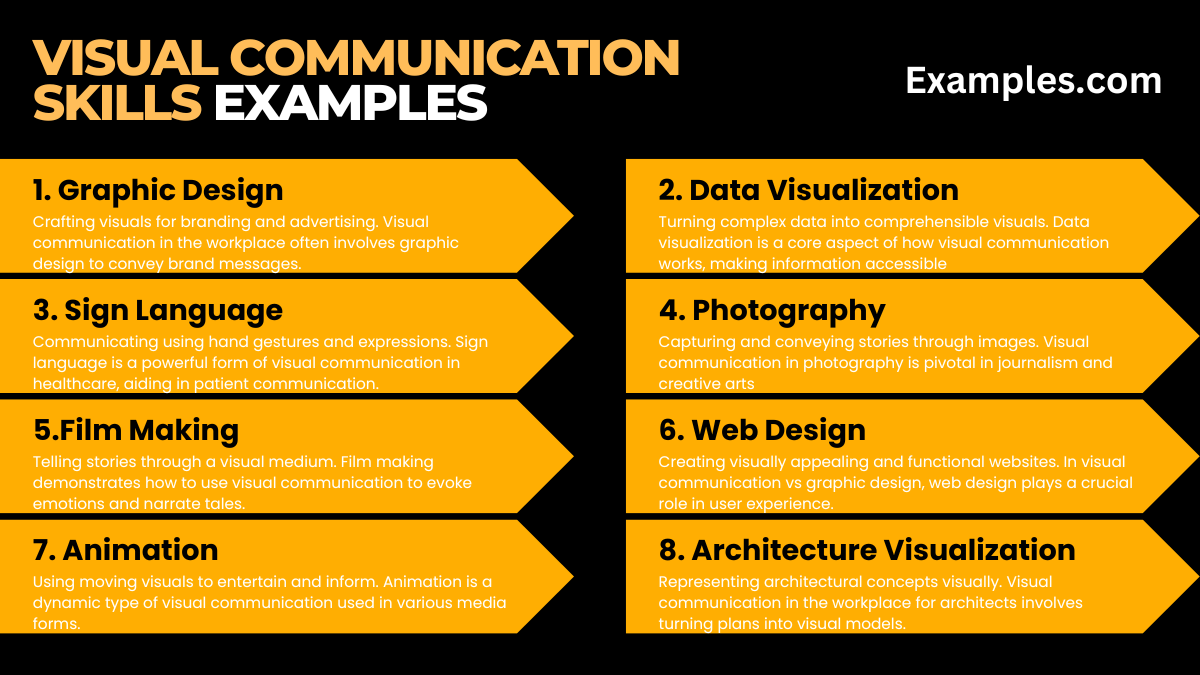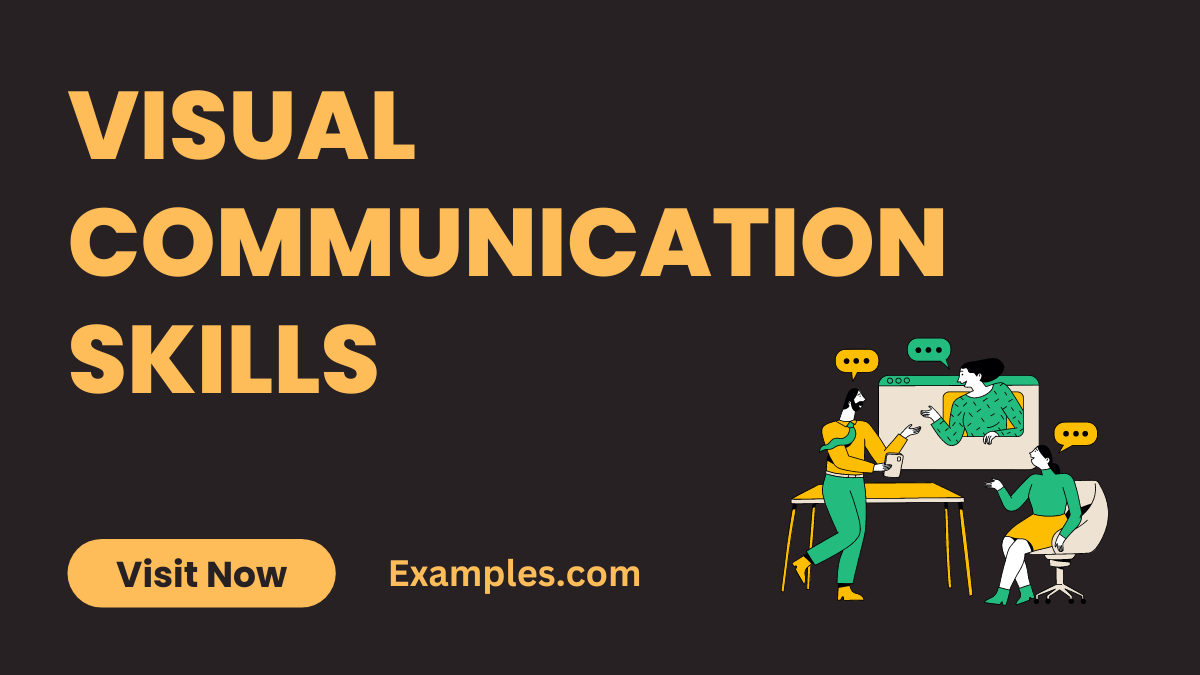9+ Visual Communication Skills Examples
Visual communication skills are essential in our highly visual world, playing a crucial role across various fields. This comprehensive guide delves into the intricacies of these skills, providing insightful communication examples to demonstrate their practical application. From business presentations to digital marketing, learn how effective visual communication can transform ideas into impactful messages. Whether you’re a student, professional, or enthusiast, this guide will equip you with the knowledge and tools to master the art of visual communication.
Download Visual Communication Skills PDF
Download Visual Communication Skills PDF
What is Visual Communication Skills?

Visual communication skills refer to the ability to convey information and ideas effectively through visual means. This involves the use of images, symbols, colors, and designs to communicate messages without relying solely on words. These skills encompass understanding and creating visual aids like charts, graphs, and infographics, as well as interpreting and using body language and facial expressions. Effective visual communication is key in various fields such as education, marketing, and design, enabling clearer and more engaging interactions.
What is the Best Example of Visual Communication Skills?

One of the best examples of visual communication skills can be seen in the creation and use of infographics. Infographics are a powerful tool that combines graphics, data, and text to present complex information in an easily digestible and visually appealing format. They are designed to capture the viewer’s attention quickly, making them ideal for conveying messages in an era where people are bombarded with information.
10 Visual Communication Skills Examples

Visual communication skills are vital in conveying information effectively through visual means, encompassing a broad range of techniques from graphic design to body language. These skills play a crucial role in various sectors, enhancing the clarity and impact of messages. Whether it’s in education, marketing, or media, the ability to use visual elements effectively is key to engaging and informing audiences. Here are 10 unique examples of visual communication skills, each illustrating the versatility and importance of these skills:
- Graphic Design: Crafting visuals for branding and advertising. Visual communication in the workplace often involves graphic design to convey brand messages.
- Data Visualization: Turning complex data into comprehensible visuals. Data visualization is a core aspect of how visual communication works, making information accessible.
- Sign Language: Communicating using hand gestures and expressions. Sign language is a powerful form of visual communication in healthcare, aiding in patient communication.
- Photography: Capturing and conveying stories through images. Visual communication in photography is pivotal in journalism and creative arts.
- Film Making: Telling stories through a visual medium. Film making demonstrates how to use visual communication to evoke emotions and narrate tales.
- Web Design: Creating visually appealing and functional websites. In visual communication vs graphic design, web design plays a crucial role in user experience.
- Animation: Using moving visuals to entertain and inform. Animation is a dynamic type of visual communication used in various media forms.
- Architecture Visualization: Representing architectural concepts visually. Visual communication in the workplace for architects involves turning plans into visual models.
- Visual Merchandising: Displaying products to attract customers. In retail, visual communication skills are key to effective merchandising.
- Interactive Media: Engaging audiences through interactive visual content. Visual communication in the media includes the use of interactive elements to enhance storytelling.
Each of these examples demonstrates the diverse applications and importance of visual communication, highlighting its role in effective information sharing and storytelling across different fields.
Visual Communication Skills in the Workplace
In the modern workplace, visual communication skills are key to enhancing clarity, engagement, and productivity. These skills facilitate effective team collaboration, enhance presentations, and aid in the comprehension of complex data. Leveraging visual tools and techniques in a professional setting can lead to more impactful and efficient communication.
- Interactive Whiteboard Sessions: Engage teams with interactive whiteboard discussions.
Example: Use digital whiteboards for real-time collaboration and idea sharing. - Customized PowerPoint Templates: Standardize presentations with branded templates.
Example: Design templates reflecting company branding for uniform presentations. - Graphical Email Signatures: Make emails memorable with custom signatures.
Example: Include a small, branded graphic in your email signature. - Visual Project Timelines: Clarify project phases with timelines.
Example: Create a visual timeline for project milestones. - Infographic Resumes for Recruitment: Use infographics for candidate evaluation.
Example: Encourage infographic resumes for a quick overview of skills.
Visual Communication Skills for Students
For students, visual communication skills enhance learning, creativity, and the ability to present ideas effectively. These skills are vital for academic success and personal growth, helping students to better interpret and convey information.
- Educational Infographics: Simplify complex subjects with infographics.
Example: Create an infographic summarizing a history chapter. - Study Mind Maps: Organize study material with mind maps.
Example: Use mind maps to outline key concepts in a subject. - Digital Portfolios: Showcase work through digital portfolios.
Example: Build a digital portfolio to display art projects. - Presentation Software Mastery: Develop engaging presentations.
Example: Use PowerPoint or Prezi for school presentations. - Video Projects for Assignments: Enhance learning with video projects.
Example: Create a documentary-style video for a class assignment.
Visual Communication Skills at School
At school, visual communication skills are essential for both teaching and learning. They help in making educational content more engaging and understandable for students, fostering a more interactive and effective learning environment.
- Interactive Classroom Posters: Enhance learning environments with posters.
Example: Use colorful, informative posters for topic summaries. - Classroom Presentations with Visual Aids: Make lessons more engaging with visuals.
Example: Integrate images and videos into lectures. - Graphic Organizers for Lesson Planning: Organize lessons visually.
Example: Use Venn diagrams to compare and contrast topics. - Digital Storytelling in Lessons: Incorporate storytelling with digital tools.
Example: Use animation software for storytelling in lessons. - Educational Games and Quizzes: Utilize visual games for learning.
Example: Implement interactive quizzes with visual elements.
How to Improve Visual Communication Skills?
Improving your visual communication skills is vital in a world where visual content reigns supreme. Here are steps to enhance these skills:
- Learn Basic Design Principles: Understand the fundamentals of design, including color theory, layout, and typography. This knowledge is crucial in creating visually appealing and effective communication materials.
- Practice with Different Visual Media: Experiment with various forms of visual media, such as photography, videography, and graphic design. This diversity will broaden your skills and understanding of visual communication.
- Use Technology and Tools: Familiarize yourself with visual content creation tools and software. Technologies like Adobe Photoshop, Illustrator, and Canva can significantly aid in creating high-quality visuals.
- Study Visual Communication Examples: Analyze successful visual communication examples to understand what works and why. This can include everything from advertising campaigns to corporate presentations.
- Feedback and Continuous Learning: Seek feedback on your visual creations and be open to constructive criticism. Continuous learning and adapting to new trends and technologies are essential.
- Understand Your Audience: Tailor your visuals to suit the preferences and understanding of your target audience. This makes your communication more effective and engaging.
- Explore Types of Visual Communication: Familiarize yourself with different types, such as infographics, interactive media, and visual reports. Each type has its unique strengths and applications.
What is the Importance of Visual Communication Skills?
Visual communication skills are increasingly crucial due to several factors:
- Enhanced Message Clarity: Visuals can explain complex information more clearly than text alone, making them essential in education, visual communication in healthcare, and business.
- Increased Engagement: Visual content is more likely to engage audiences, crucial in areas like marketing and visual communication in the media.
- Global Reach: Visuals can transcend language barriers, making them ideal for global communication.
- Efficiency: Visuals can convey information more quickly and effectively, a significant advantage in fast-paced environments like the workplace.
- Career Opportunities: Proficiency in visual communication opens doors to various visual communication jobs, careers, and salaries across multiple industries.
What Makes Visual Communication Skills Effective?
Effective visual communication skills hinge on several key elements:
- Clarity and Simplicity: The best visual communications are easy to understand and free from unnecessary complexity.
- Audience Awareness: Understanding the audience’s needs and preferences is crucial for creating effective visuals. This is particularly important in fields like visual communication in photography and advertising.
- Consistency: Consistent use of colors, fonts, and styles helps in brand recognition and message reinforcement.
- Adaptability: Effective visual communication adapts to different contexts, such as visual communication in animals versus visual communication in insects.
- Emotional Connection: Visuals that evoke emotions can be more impactful and memorable.
- Integration of Text and Imagery: Balancing text and imagery effectively ensures that the visual communication is engaging and informative.
- Ethical Consideration: Ethical use of visuals, especially in sensitive areas like visual communication in healthcare, is crucial.
By honing these skills and understanding their importance, individuals and organizations can significantly improve how they convey information and ideas, making their communications more impactful and effective.
How to Learn Visual Communication Skills?
To learn visual communication skills, engage in courses, practice with design tools, study visual communication examples, and seek feedback for continuous improvement.
Is Visual Communication a Skill?
Yes, visual communication is a vital skill involving the use of visuals like images and symbols for effective idea and information conveyance.
Why Do We Need Visual Communication Skills?
Visual communication skills are needed for clearer, more engaging interactions across fields like education, marketing, and design, enhancing message clarity and audience engagement.
In conclusion, visual communication skills are essential in today’s fast-paced, visually-oriented world. They enhance clarity, engagement, and effectiveness in conveying messages across various fields. From graphic design to body language, these skills are crucial for successful communication, making complex information accessible and engaging. Mastering visual communication is key to thriving in both professional and personal realms.



